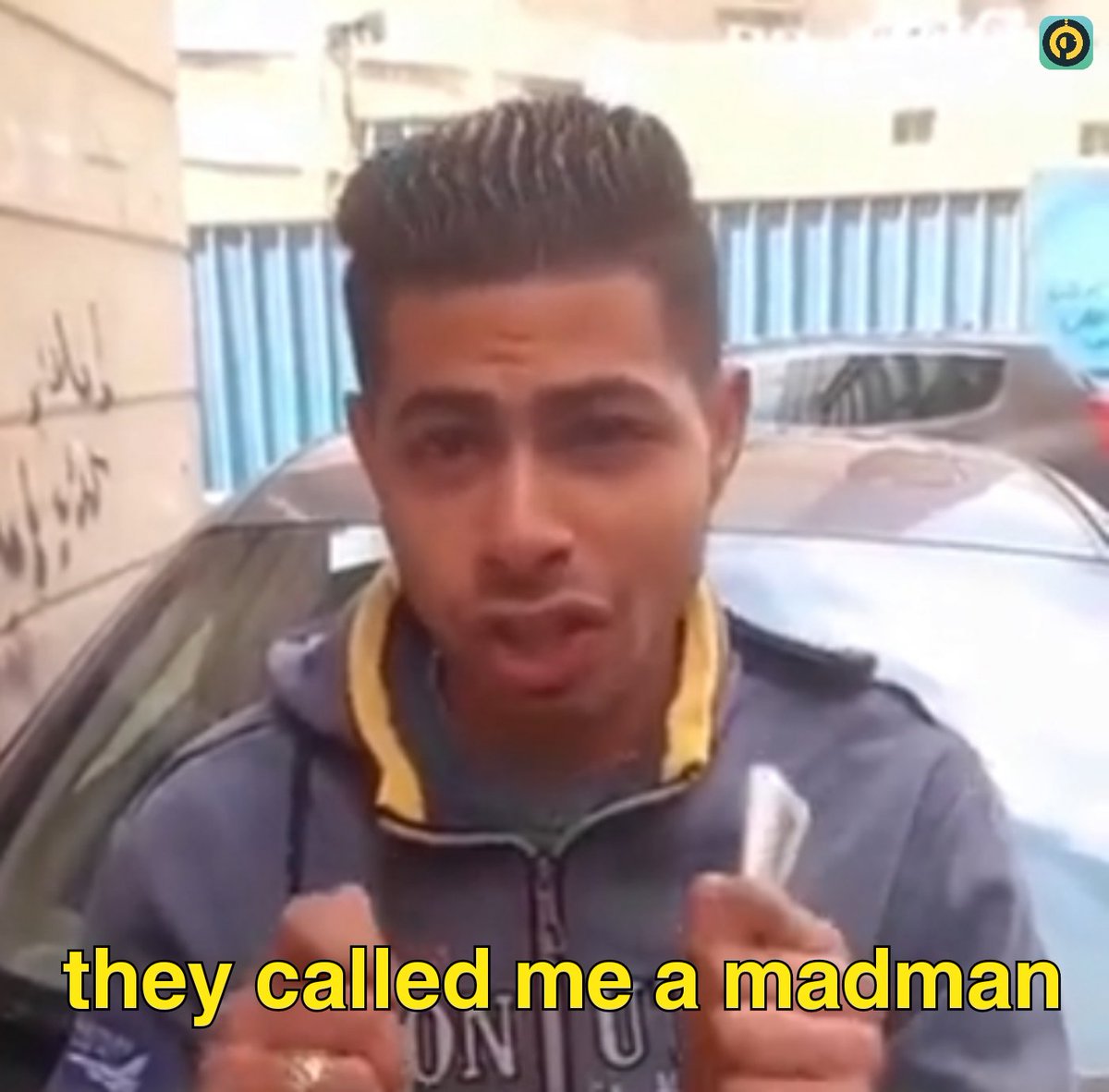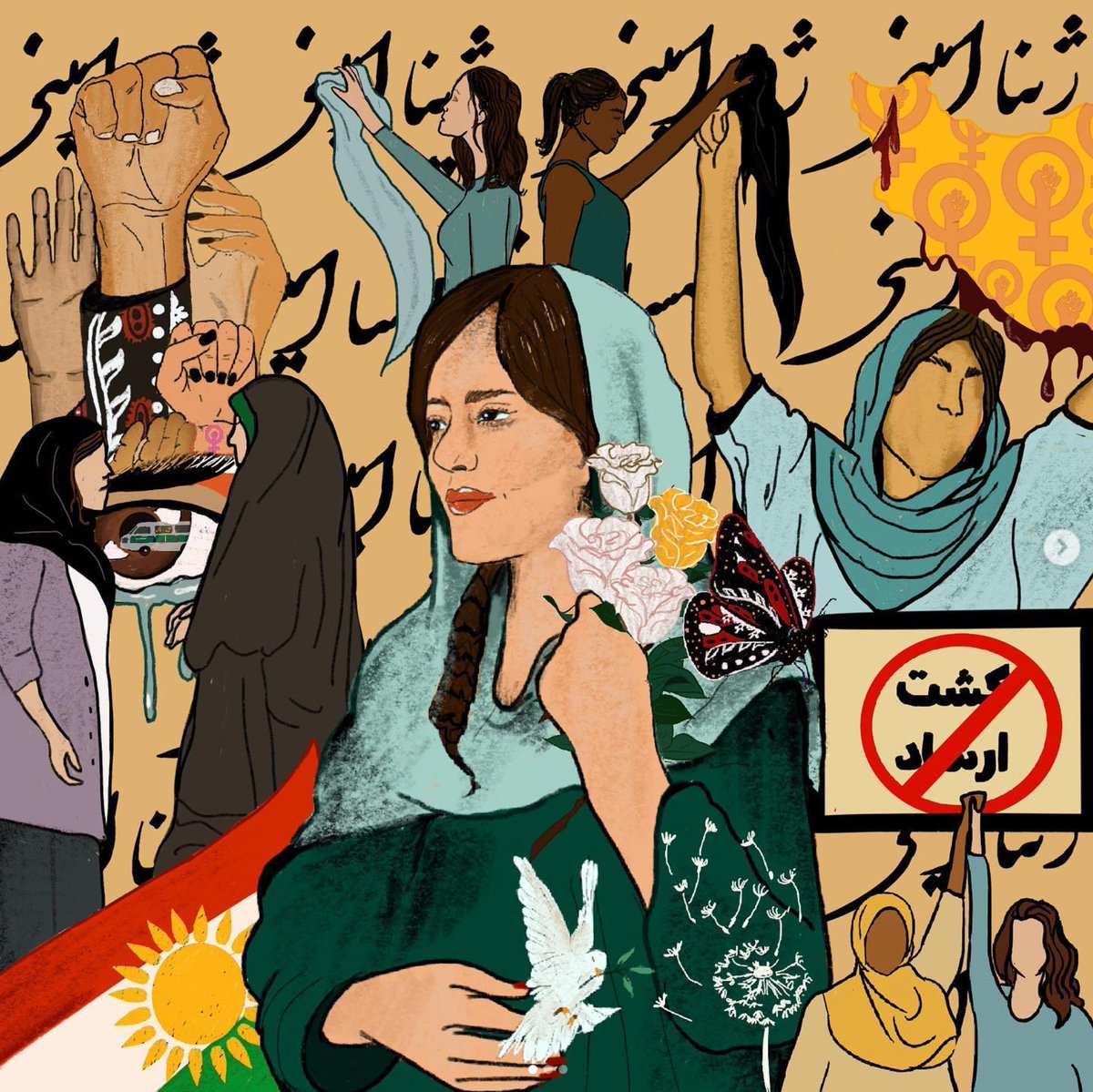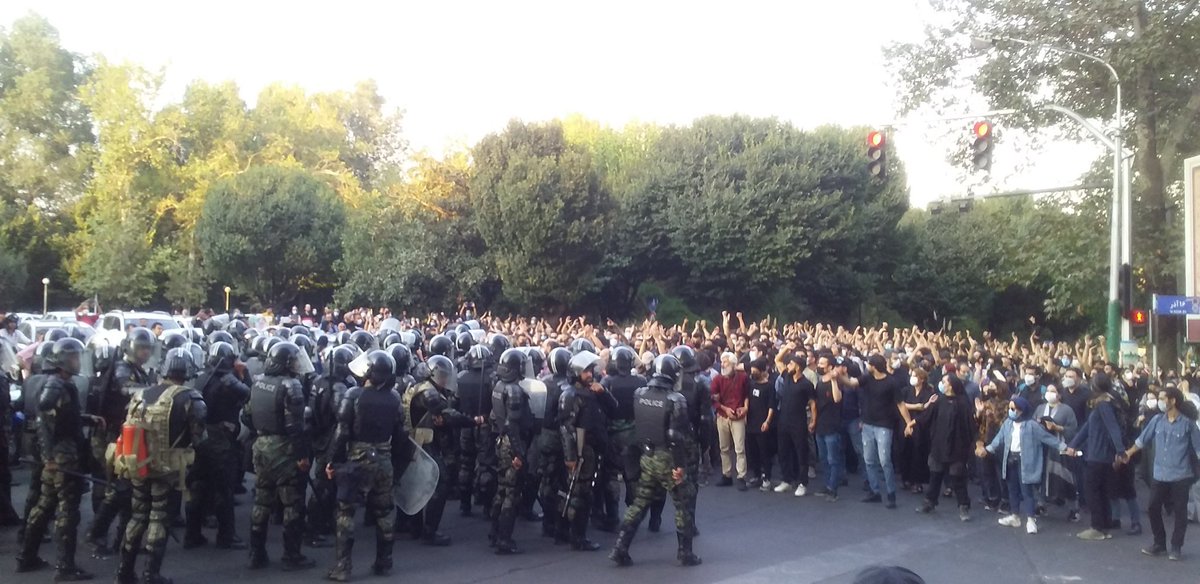First off is this 1966 magazine of The Voice of Pakistan, the Persian-language Pakistani radio station that broadcasted nightly into Tehran
On the cover is “Hazrat President,” Ayub Khan, as he was referred to in the Persian


On the cover is “Hazrat President,” Ayub Khan, as he was referred to in the Persian
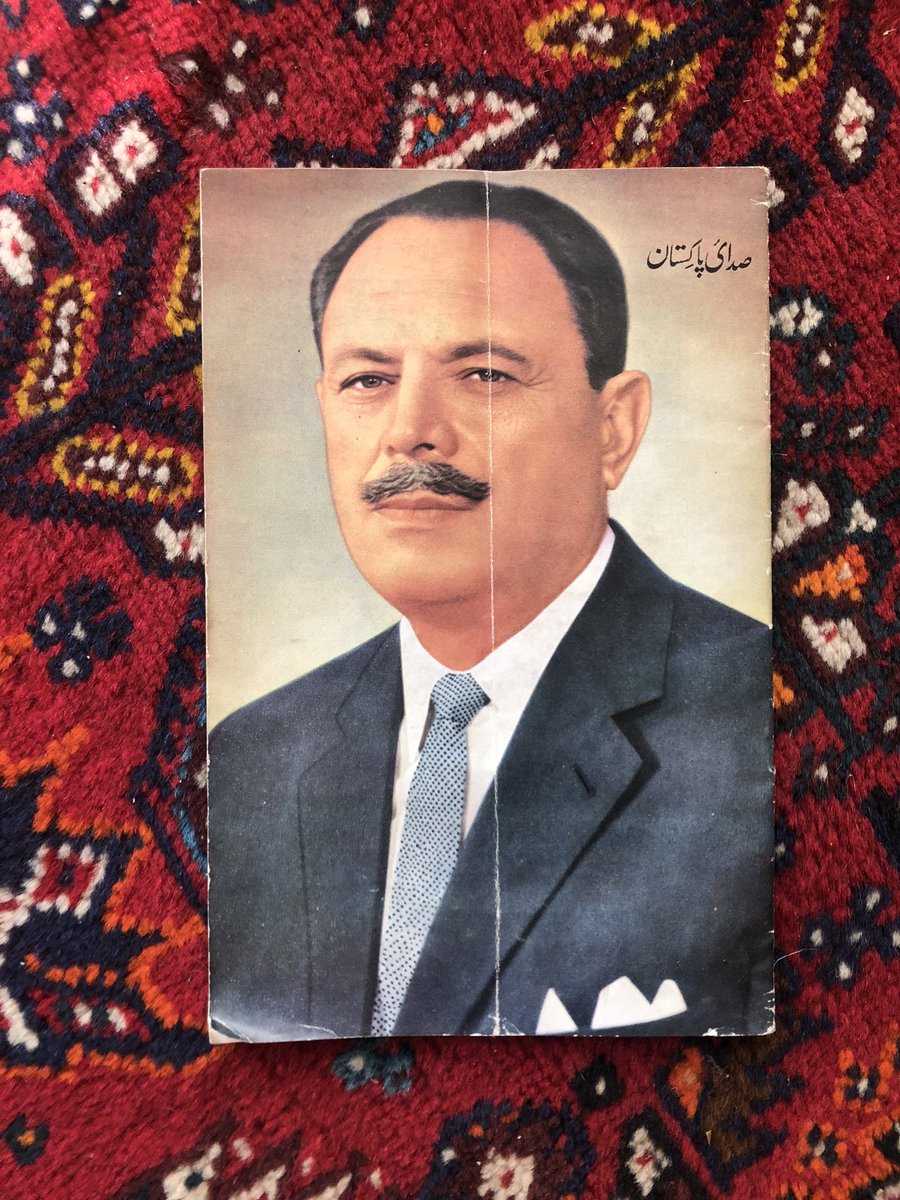
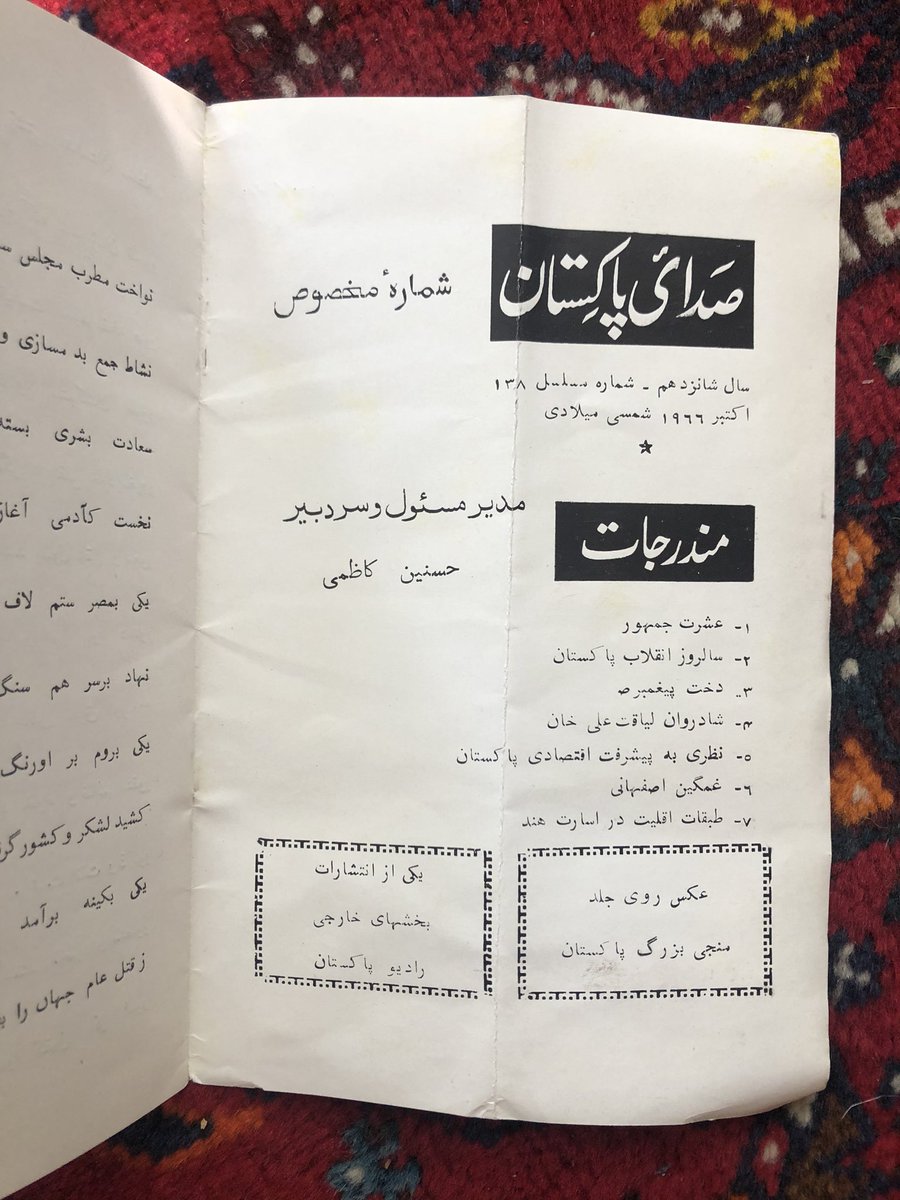

The magazine has a few articles on political topics, like the successes of Ayub Khan’s “Slow Revolution” (I.e. coup) of 1958 as well Pakistani political history 

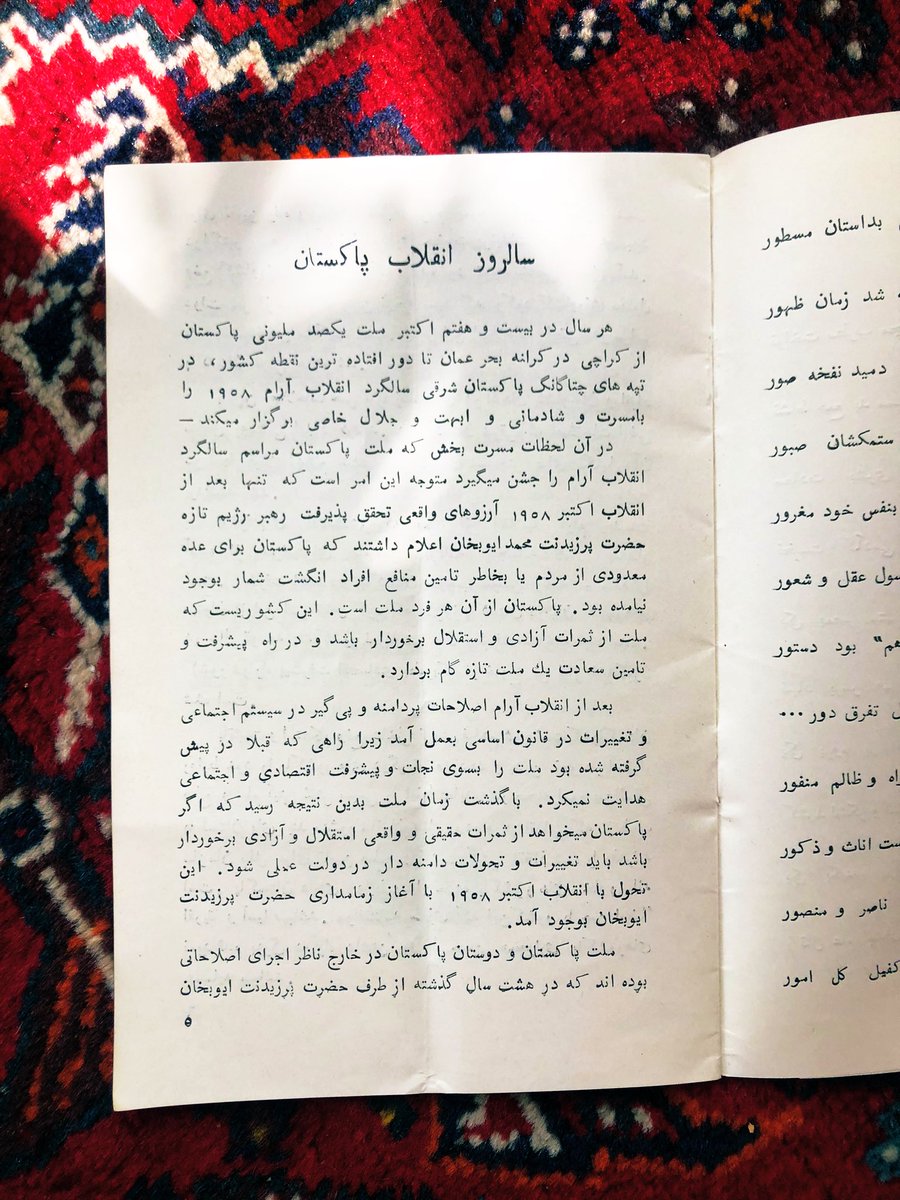
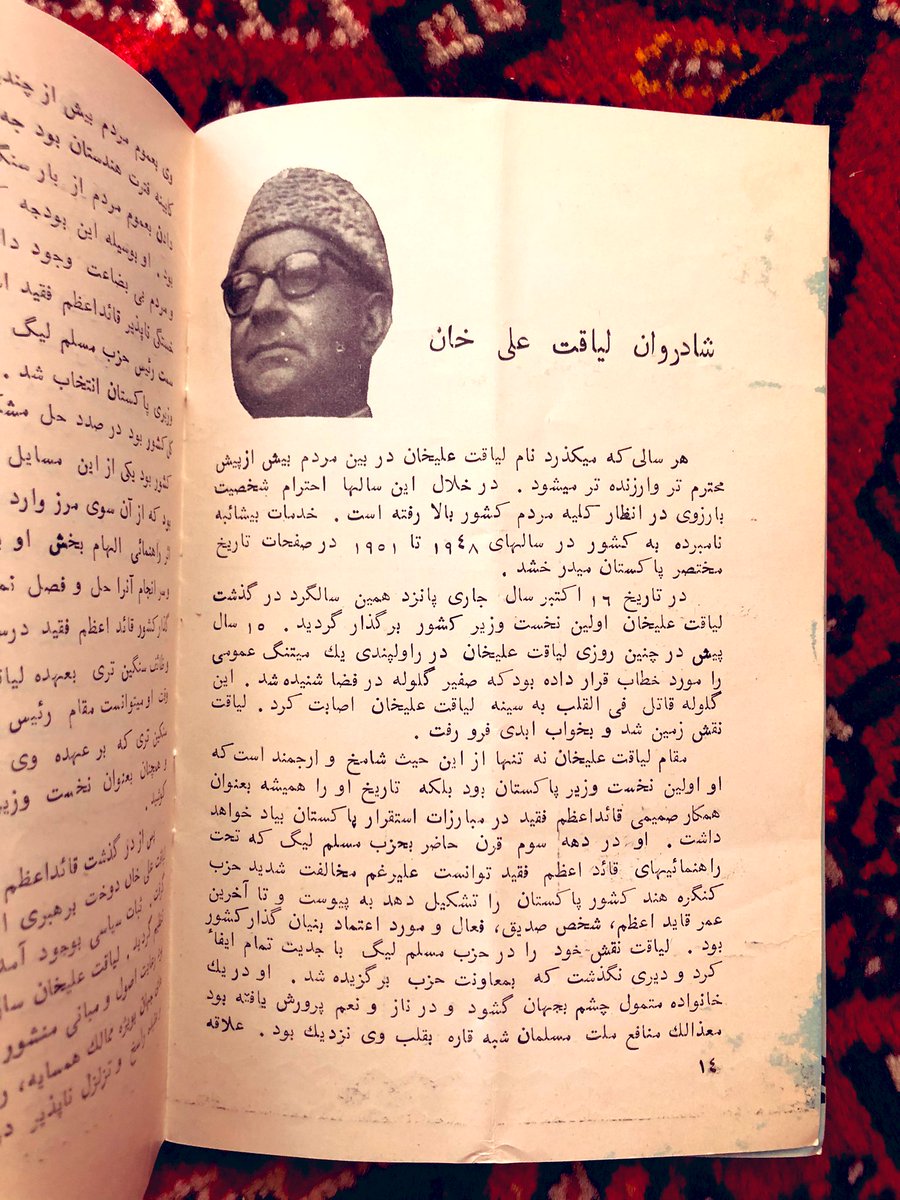
And some articles about Pakistan and Iran’s shared culture, as well as this Persian poem celebrating Pakistan and Iran-Pak friendship 

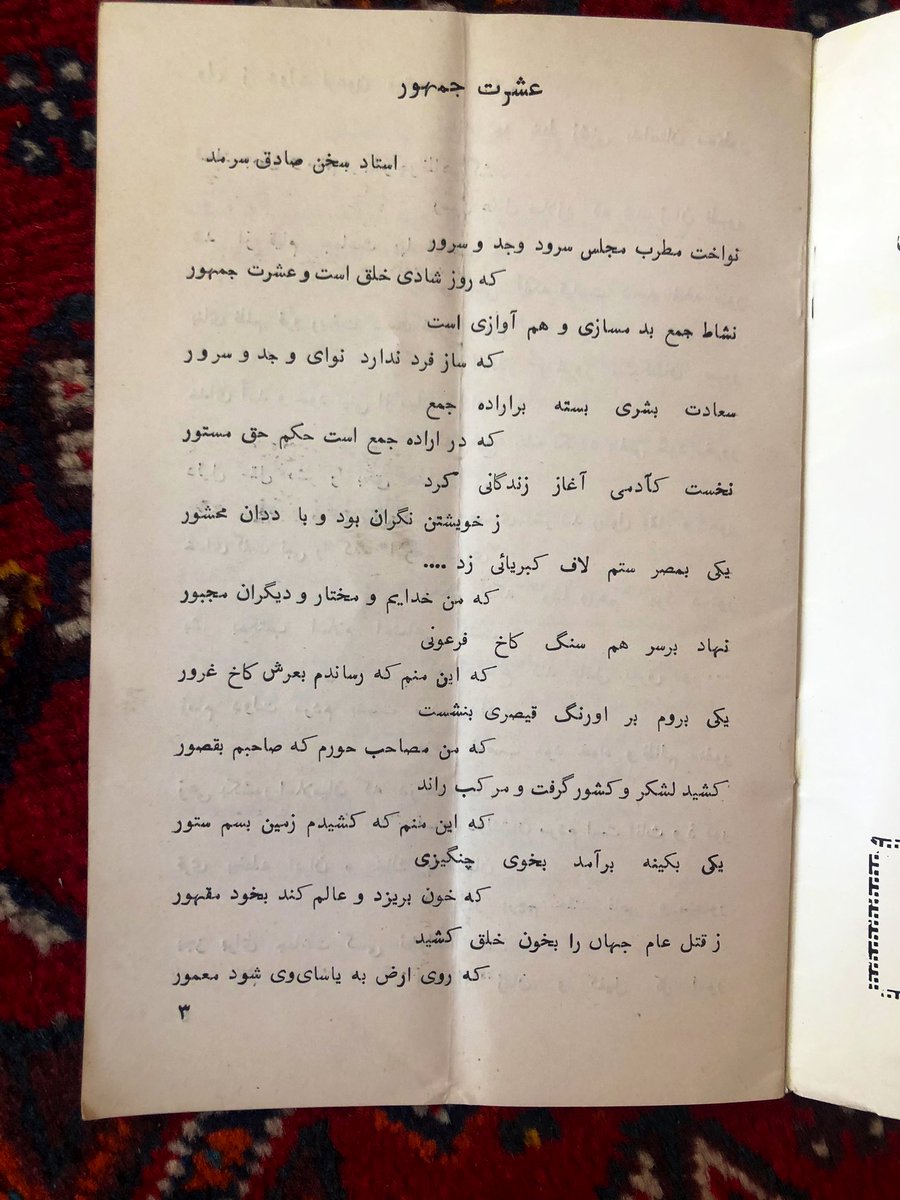
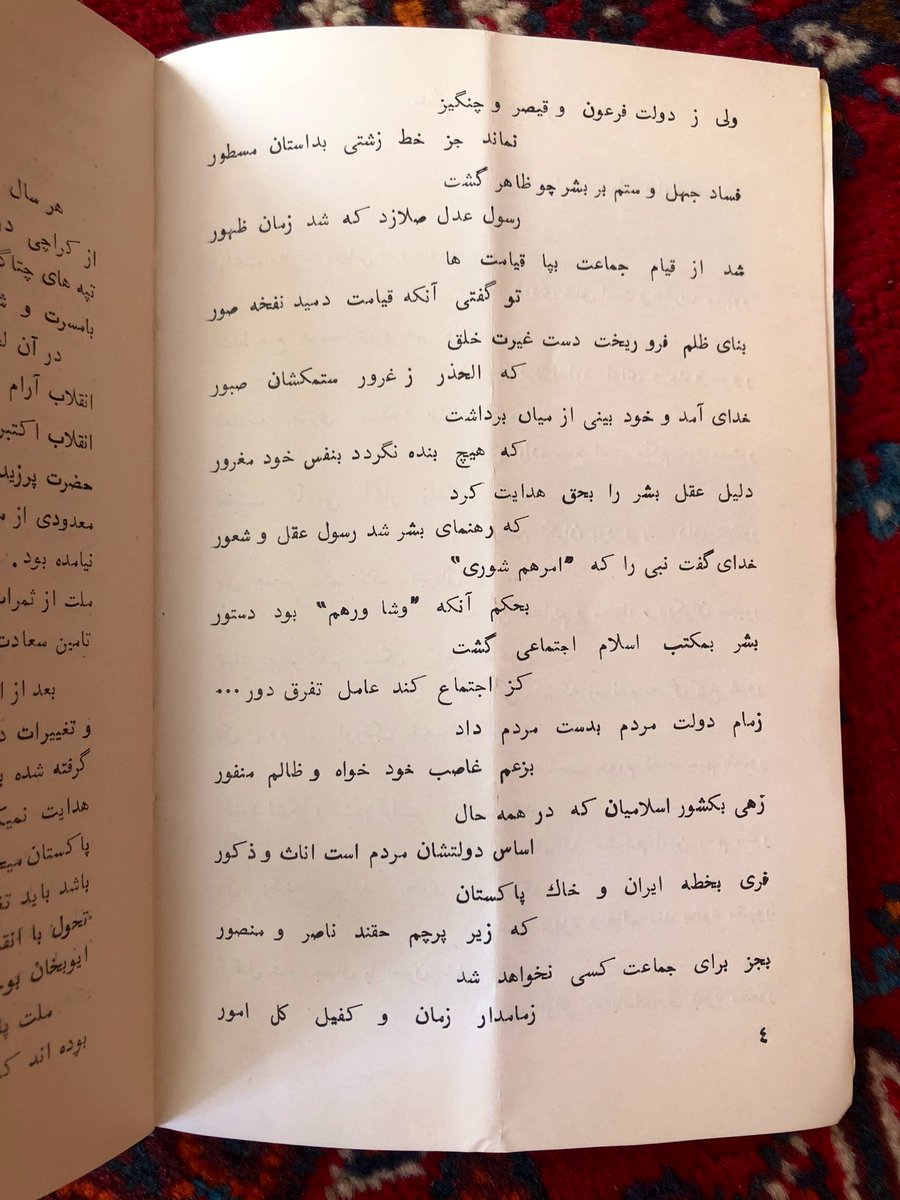
Next up is this history of the movement for independent Pakistan, focused on the struggle against British colonialism and the creation of the Muslim League out of fear of ending up a persecuted minority in a liberated India 
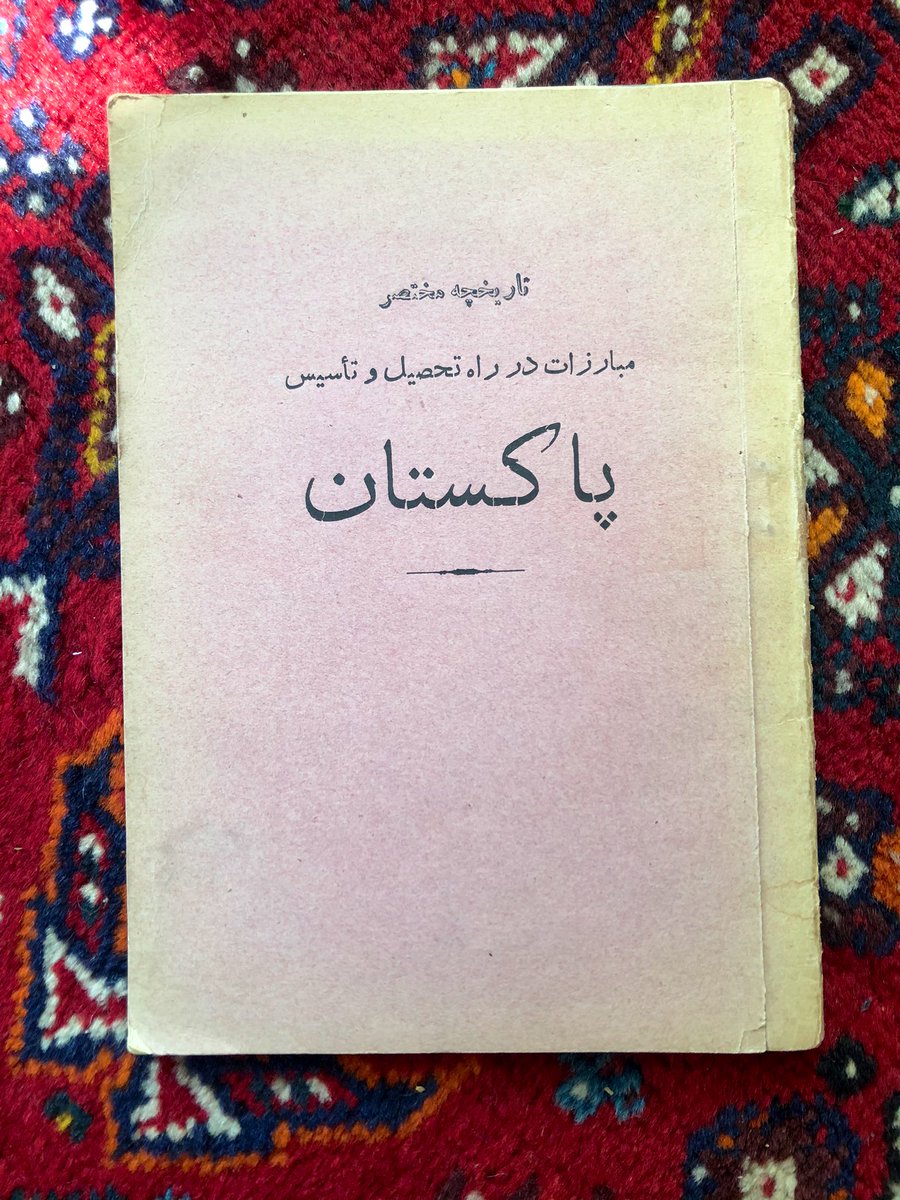
The text begins with this striking poem entitled Pakistan-Nama, written by extremely popular Iranian poet of the time, Malek Osh-Shoara Bahar.
It extols the virtues of Pakistan and the greatness of its coming future

It extols the virtues of Pakistan and the greatness of its coming future
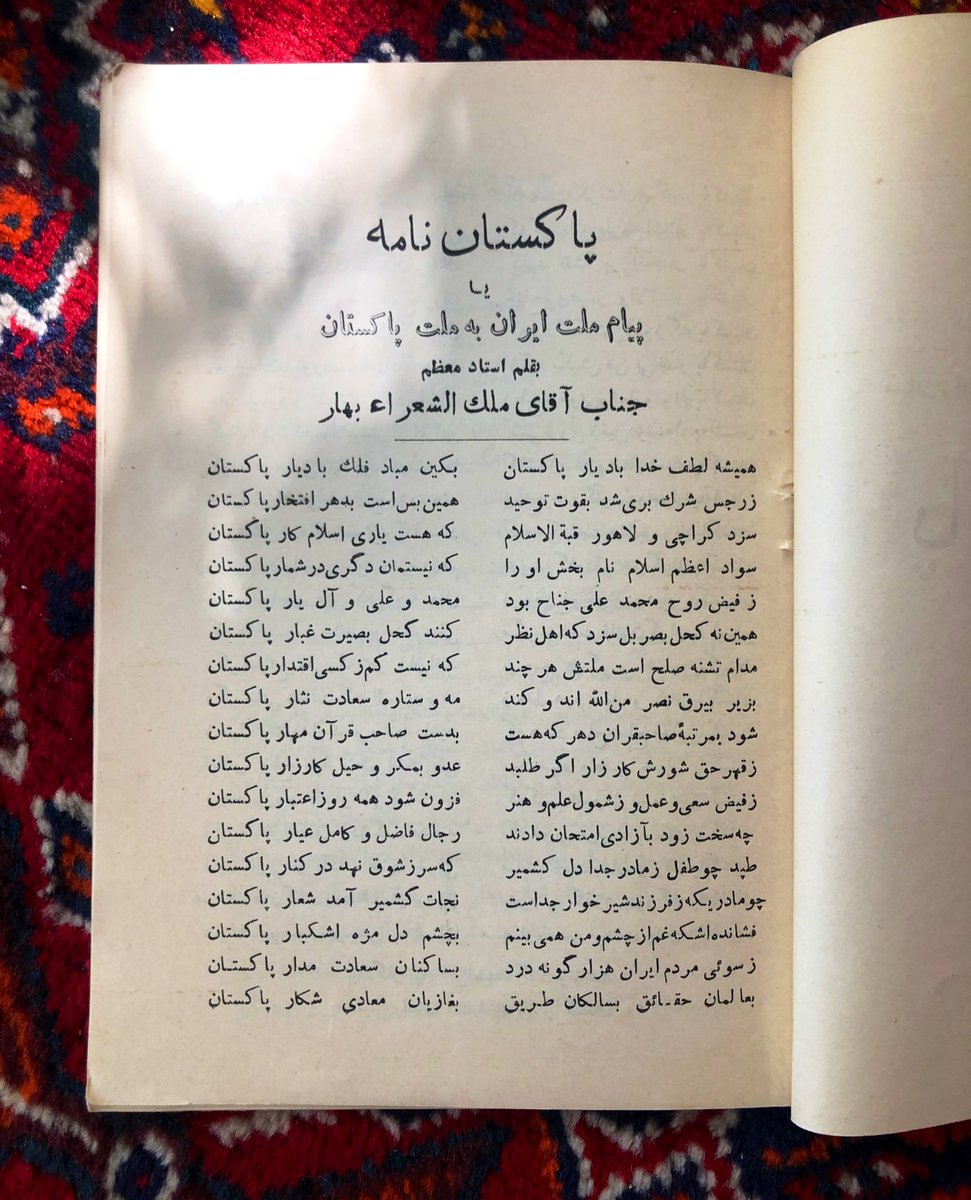
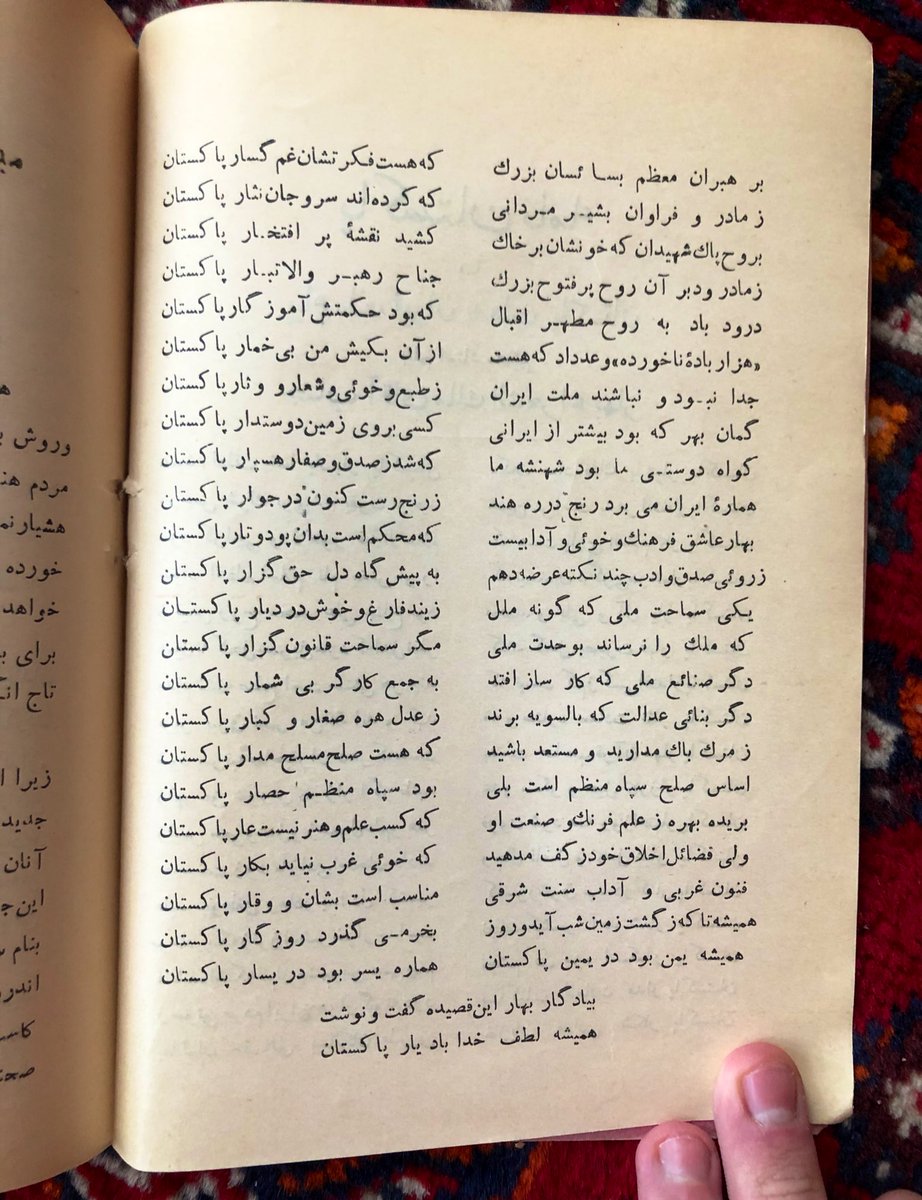
One article argues that Pakistan’s culture is a product of Persian heritage mixing with South Asia, and that Iran has been and will continue to be Pakistan’s central cultural inspiration. 

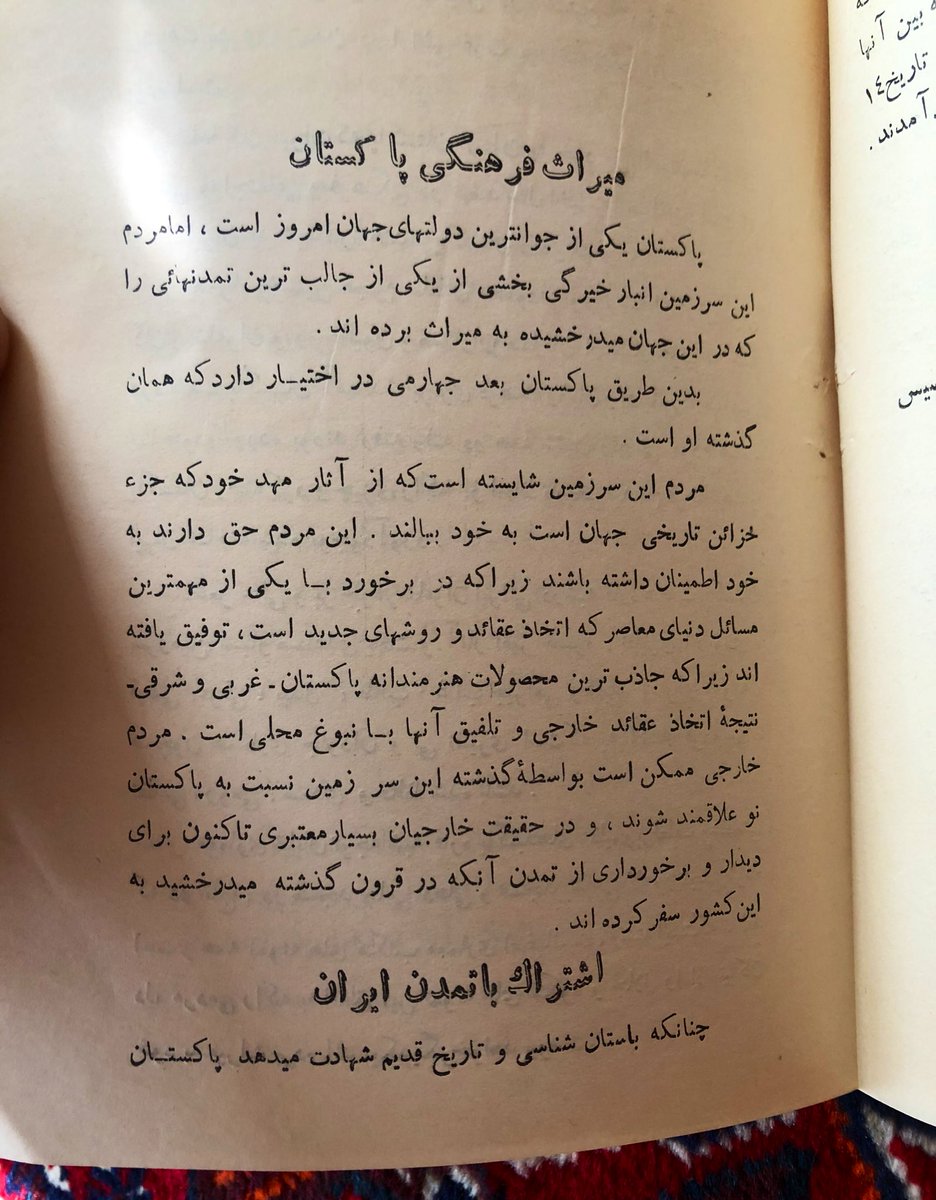
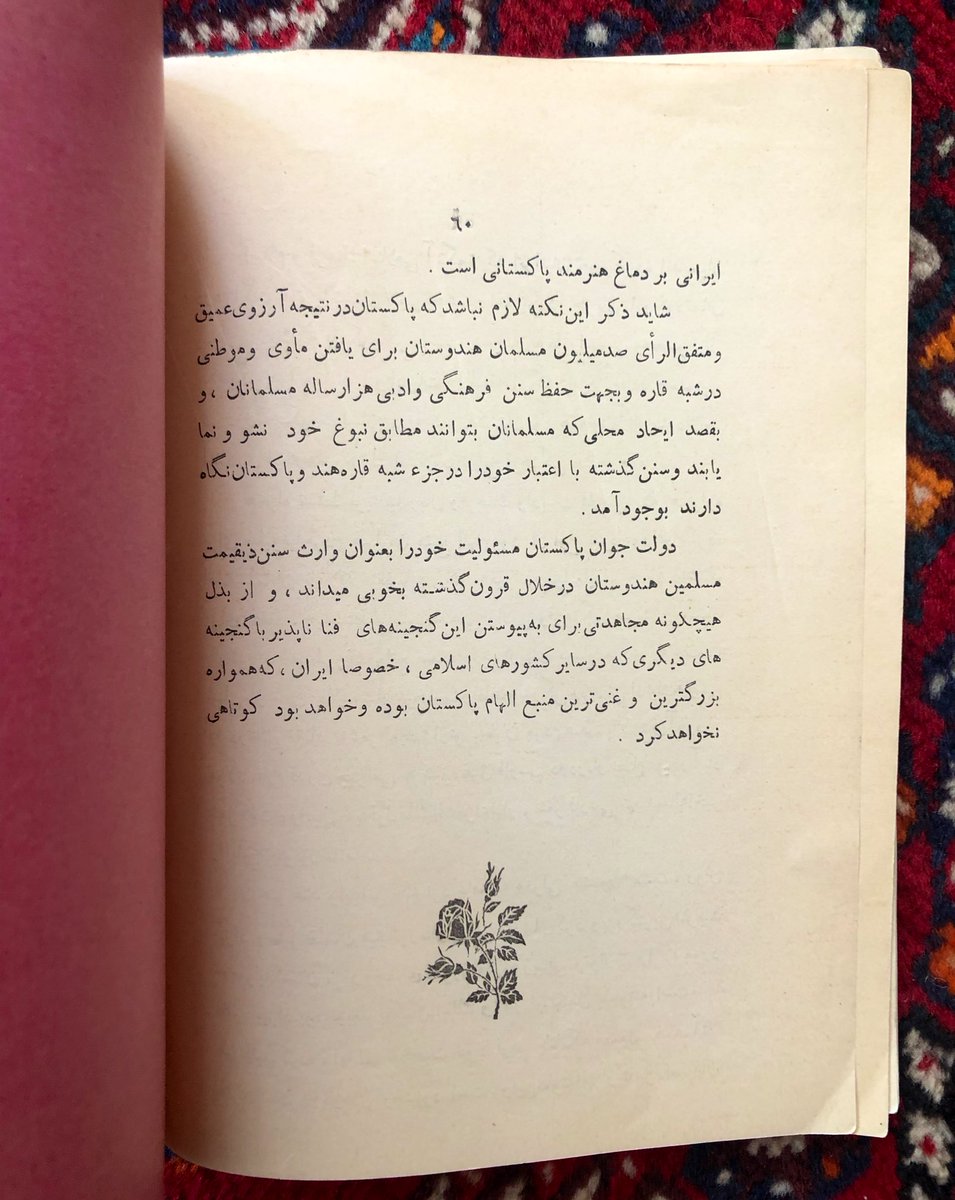
Persian was widely known among educated Pakistanis, result of 700 years of Persian being lingua franca of much of India, ending with British colonialism.
In 1800, more South Asians knew Persian than people in Iran: reminder that Persian culture is shared heritage of many nations
In 1800, more South Asians knew Persian than people in Iran: reminder that Persian culture is shared heritage of many nations
Events in South Asia would have been deeply familiar to Iranians; the Indian invasion and occupation of Hyderabad and Kashmir, both regions with strong and active Persian culture, were covered in Iran’s press
And even sartorially, Pakistani leaders like Jinnah resembled Mossadeq
And even sartorially, Pakistani leaders like Jinnah resembled Mossadeq
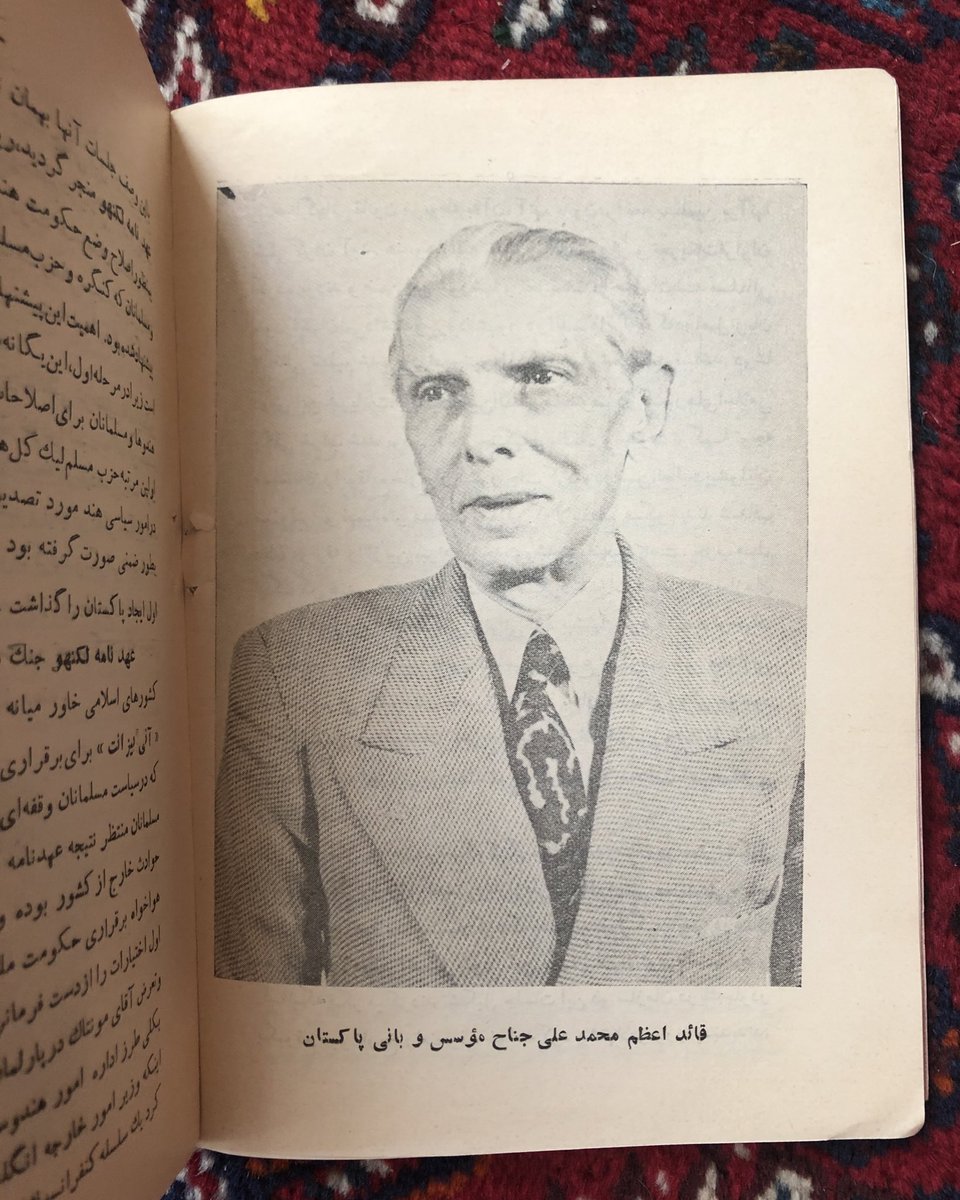
The shared culture of Pakistan and Iran even come through in seemingly minor visual choices- for example, this Peacock stamp.
Peacock is a symbol of royalty and divinity in both places, like Takht-e Tavus (the Peacock Throne)
Peacock is a symbol of royalty and divinity in both places, like Takht-e Tavus (the Peacock Throne)
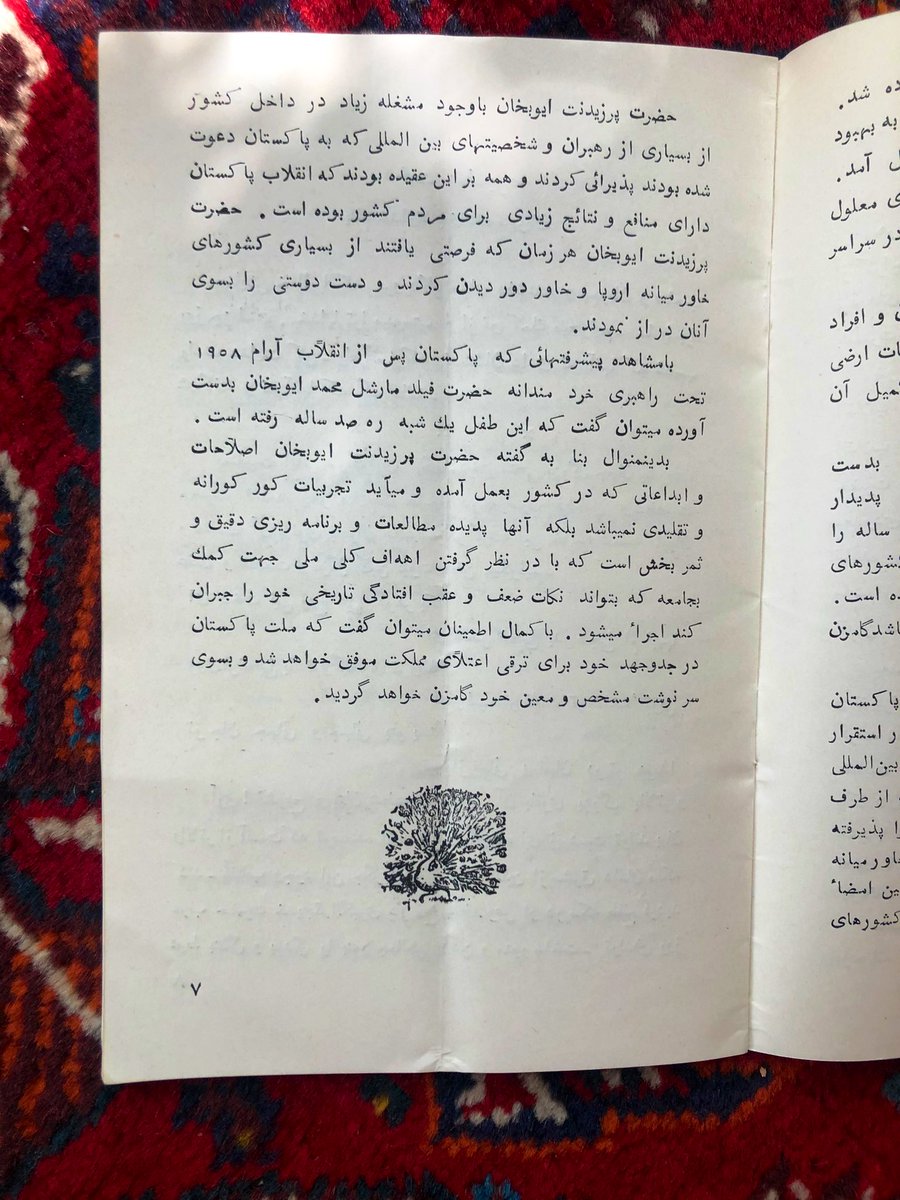
Long standing connections between Iran and Pakistan became strained in the 1980s, as Iran’s Revolution provoked fears among Pakistani elites and Zia ul-Haq initiated a religious campaign that heightened sectarian boundaries in Pakistan and replaced Persian instruction with Arabic
This book, published in 1979/80 by the Iranian Students Organization of India, condemned the Bhutto government as a thinly-veiled feudalist state but also expressed growing fears of the direction Pakistan was going under Zia ul-Haq 


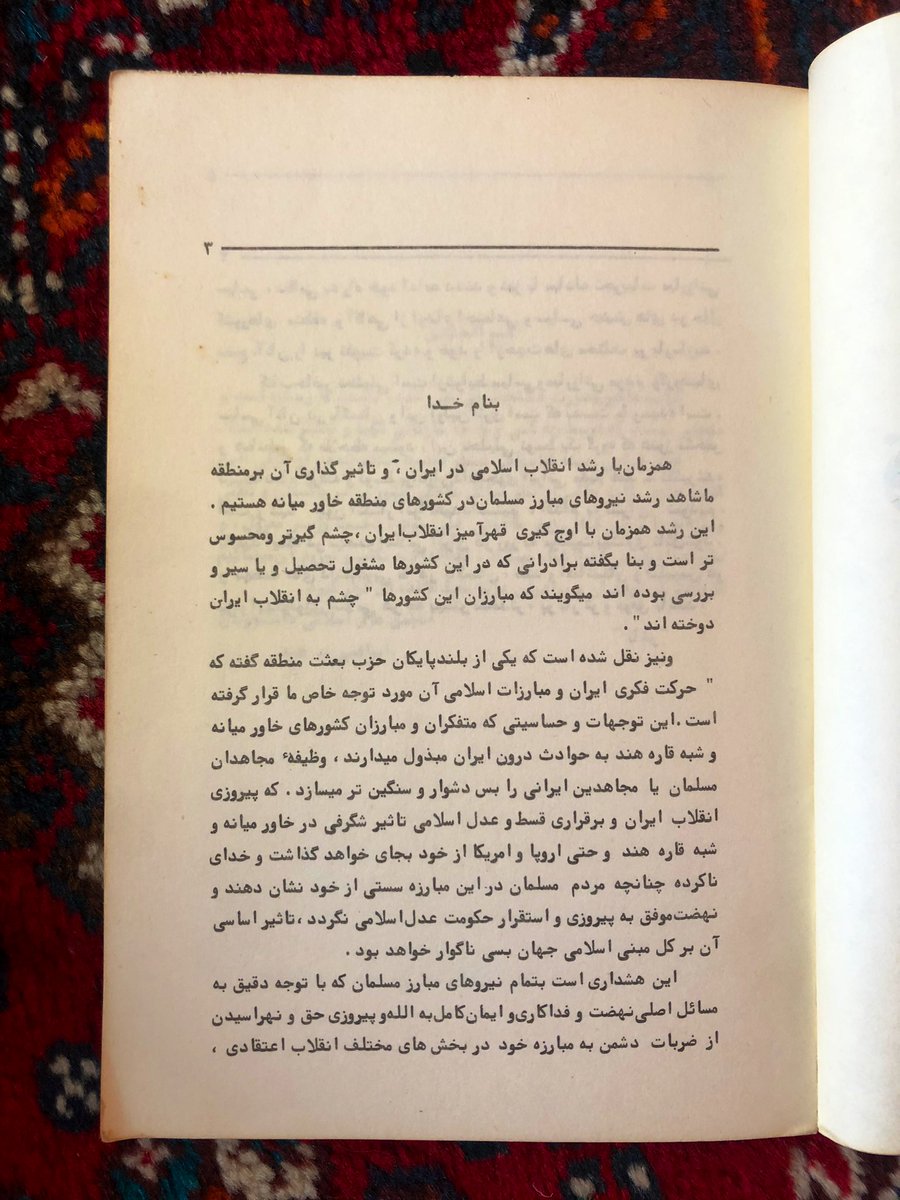
Which brings us full circle to this book, “The Issues of Pakistan,” which despite its name, is actually a Shia religious treatise responding to a Sunni treatise published in Pakistan, regarding the place of Yazid and the Prophet’s companions in Islamic memory- a recurring debate 
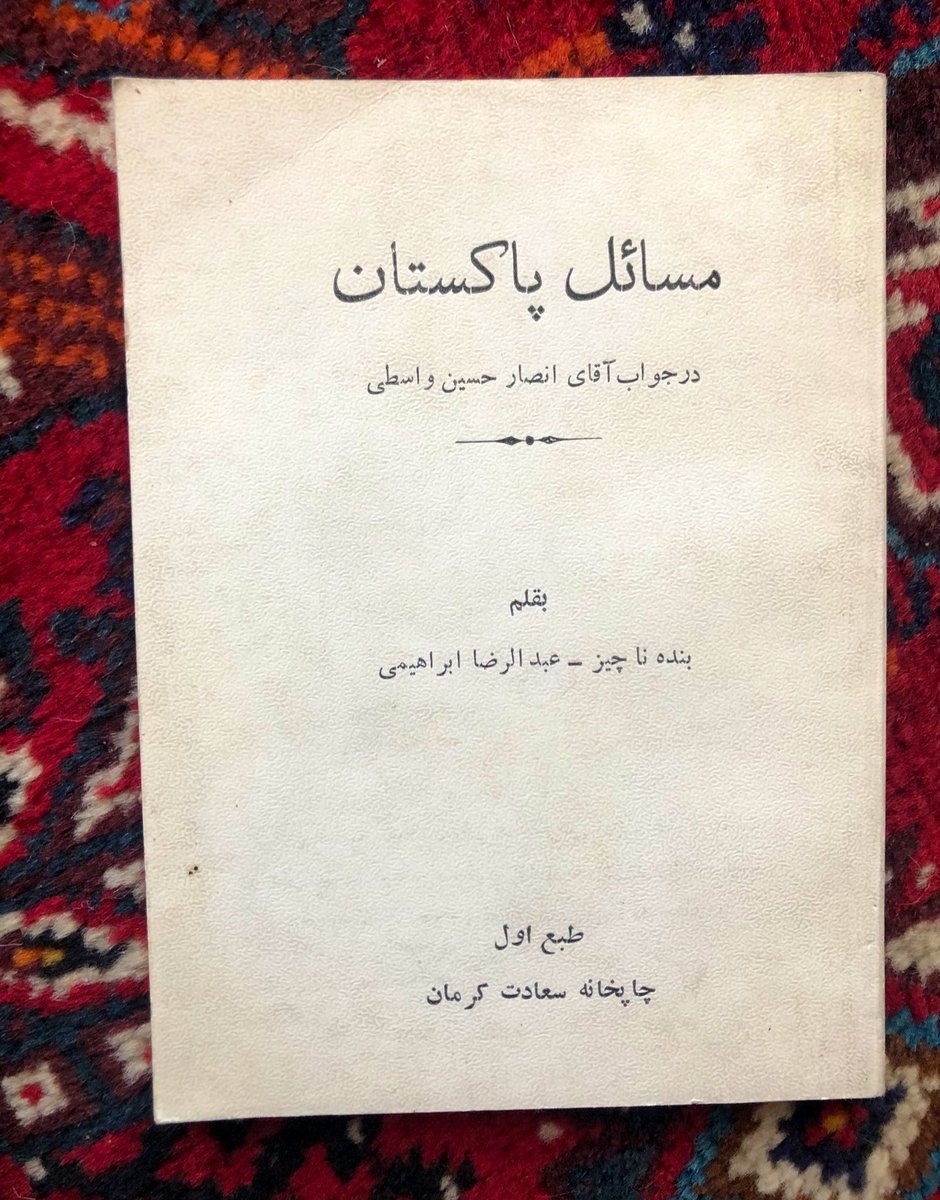
• • •
Missing some Tweet in this thread? You can try to
force a refresh








